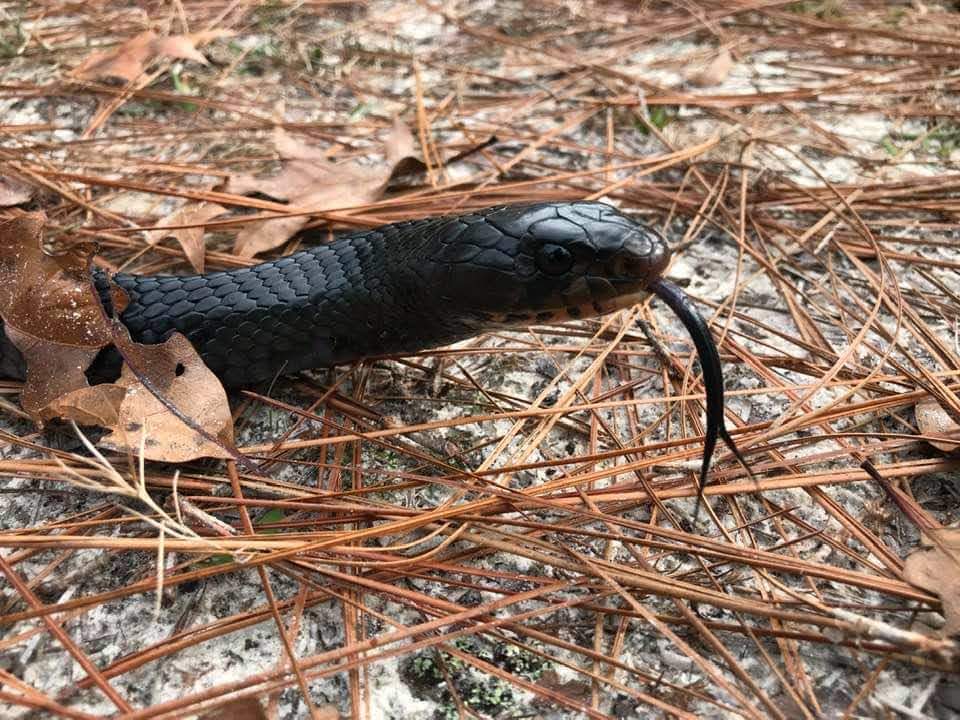A project to restore the Eastern indigo snake to Alabama is one step closer to its goal with the release of 40 indigos in the Conecuh National Forest on Saturday, May 11, 2024. The reintroduction project aims to establish a viable population of this threatened species within its historic range along Alabama’s Gulf Coast.
Representatives from the Alabama Department of Conservation and Natural Resources (ADCNR), Auburn University, U.S. Forest Service, U.S. Fish and Wildlife Service, Zoo Atlanta and the Orianne Center for Indigo Conservation at the Central Florida Zoo attended the indigo release at the Conecuh National Forest located in Covington and Escambia counties in south Alabama.
Chris Blankenship, ADCNR Commissioner said the project will restore a missing part of the state’s coastal longleaf pine forest.
“Alabama is one of the most biologically diverse states in the country, and we’re excited to be a part of restoring a previously missing piece of our natural history,” said Commissioner Blankenship. “I am grateful to our partners who are a part of this important project.”
Jim Godwin with Auburn University’s Alabama Natural Heritage Program said the indigo reintroduction project is an example of the importance of the state wildlife grant (SWG) program for the conservation and management of rare species, not just in Alabama but throughout the country. The SWG program provides federal grant funds to state fish and wildlife agencies for developing and implementing programs that benefit species in greatest conservation need and their habitats. ADCNR’s State Wildlife Action Plan identifies 366 species that are in the category of greatest conservation need.
“With this release we will have completed another step toward reestablishing indigos in Alabama,” Godwin said. “This project also serves as the role model for the indigo reintroduction project in Florida, and for future reintroduction projects. What began as a local Alabama wildlife conservation project has demonstrated that the path to recovery is possible through successful, long-term reintroduction efforts.”
The Eastern indigo project started in 2006, and the program was able to start releasing captive-raised indigos in 2010 with 17 adult snakes released into the Conecuh National Forest. The goal is to release 300 snakes to improve the chances of establishing a viable population. The current reintroduction project is modeled on work started by late Auburn University professor Dr. Dan Speake in the 1970s and 1980s.
“Each snake that we have released in the forest is an ambassador for the partnerships that make this project possible,” Godwin said. “Each of our partners and collaborators has played an important role in helping us achieve success with returning the indigo snake to the wild.”








